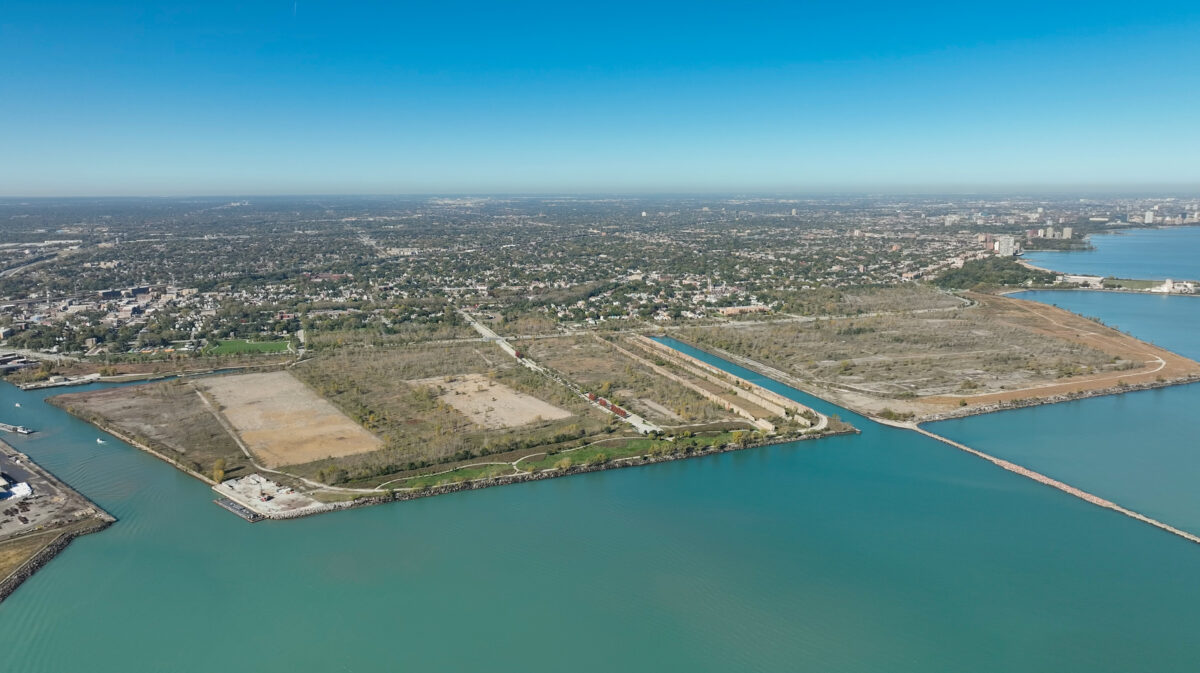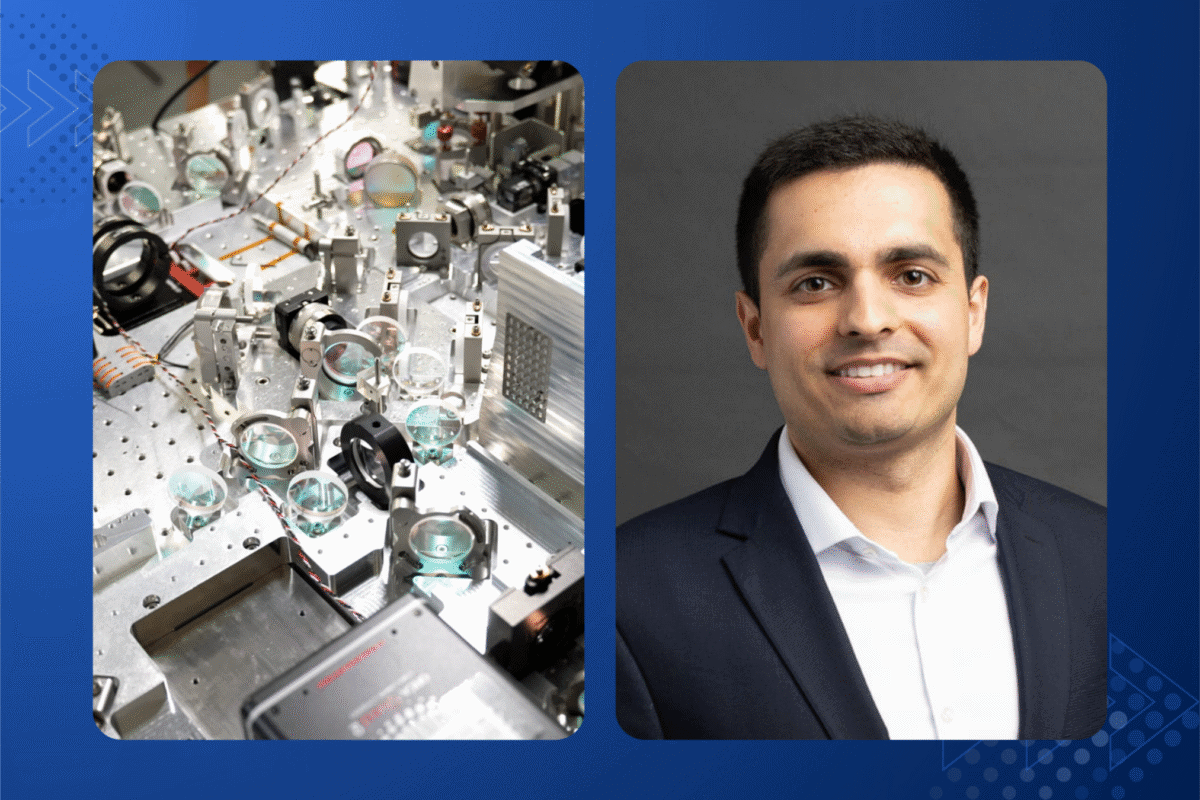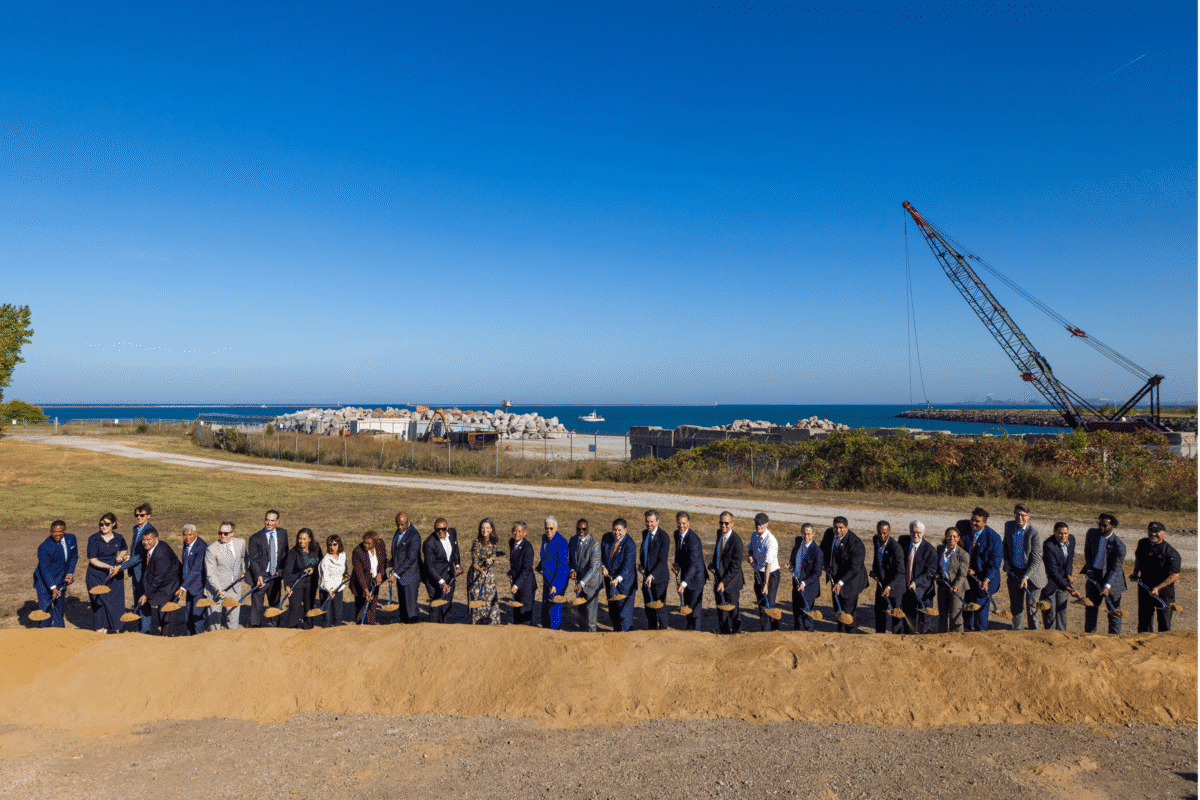
Aerial view of the former U.S. Steel South Works site
For decades, the U.S. Steel South Works plant employed thousands of Chicagoans, forged the steel that built some of the city’s iconic skyline and helped establish the region as a manufacturing hub. But when it closed its doors, it left behind questions about the conditions and future of the land that have lingered for more than 30 years.
A “brownfield” is land that used to be home to a factory, warehouse or other industrial business — like the former South Works site. When those businesses closed, they sometimes left behind small amounts of materials in the soil from past operations. Cleaning up, or remediating, a brownfield allows the land to be reused safely for housing, businesses, parks, or in this case, the Quantum Shore Chicago development that will house the IQMP.
Quantum Shore developer Related Midwest (“Related”) has decades of experience working with the Illinois Environmental Protection Agency (IEPA) on complex environmental projects throughout Chicago. To address any legacy containments remaining on site, Related has enrolled the entire 440-acre property in the state’s Site Remediation Program.
Here’s what you need to know about this new chapter for South Chicago.
Why Remediation Is Needed
The site previously earned two IEPA ‘No Further Remediation’ (NFR) letters in 1997 and 2010, confirming it met state environmental standards at that time. As science and regulations have evolved, Related committed to completing substantive additional environmental analysis to create a modernized remediation plan.
Over the past year, Pioneer Engineering & Environmental Services (“Pioneer”), a full-service environmental consulting and geotechnical engineering firm, conducted extensive site testing including soil and groundwater samples extracted from 186 soil borings, 44 test pits and 27 groundwater monitoring wells evenly spread across the entirety of the site. This means conditions were checked every few acres, both at the surface and deeper below ground.
Findings from the most recent and prior environmental analyses all pointed to the same conclusion: the soil and groundwater conditions on the site are what experts typically see on industrial properties like this one. The vast majority of results confirm that most of the property remains consistent with previous NFR findings while about 6.5% of the entire site contains petroleum levels that exceed today’s standards.
Pioneer incorporated all findings into a comprehensive environmental report and site remediation plan that was submitted to the Illinois Environmental Protection Agency. Those findings are publicly available via the IEPA website here.
What Remediation Entails
To meet the highest ecological and regulatory standards, the remediation strategy for Quantum Shore Chicago encompasses multiple measures designed to ensure the site is safe for development now and into the future:
- Installation of a horizontal engineered barrier composed of asphalt, concrete or clean soil over geotextile fabric to cover the entire site, preventing potential future exposure to underlying soils.
- Construction of an underground vertical engineered wall around the IQMP site perimeter that will act as a barrier and filter to physically contain and treat contaminants, preventing migration to surface waters, including Lake Michigan and the Calumet River.
- Excavation and off-site disposal of two small areas with contaminants, selected because this approach is both effective and feasible, and because the impacted areas are located closest to adjacent residential areas.
- Recording of updated NFR letters on the property deed.
As a further measure, the cleanup strategy follows the U.S. EPA’s Greener Cleanups framework, which minimizes energy use, air emissions and water consumption while reducing waste and protecting land and ecosystems. Meanwhile, dust monitors will be installed around the site with alarms to track air quality and additional plans in place to control dust, noise and vibration for workers and community members. A 30-year monitoring plan is proposed for the vertical engineered barrier to ensure it is functioning as designed.
Remediation work will begin once the IEPA completes its review and approval of the plan. It will be conducted in phases, beginning with the IQMP site. It is important to note that remediation work does not need to be completed before any vertical construction occurs; in fact, construction is an integral part of the remediation because the engineered barriers will be constructed as the development progresses.
The Benefits Ahead
Residents have long expressed a desire for the site to be re-evaluated for any remaining contaminants and cleaned up, which is exactly what remediation will accomplish.
And unlike the steel mills of the past, facilities housed at the IQMP will not utilize substances that would pollute the air, water or soil. The cryogenic cooling facilities at the Park will use helium and nitrogen (both inert, non-toxic and safe gases) and no chemical pollutants, similar to facilities that already operate at national labs, universities and other institutions. These facilities will also use a closed loop water cooling system that not only requires less energy, but will draw water from the city of Chicago municipal water system and not from Lake Michigan. Anchor tenant PsiQuantum will use 100% carbon free electricity to power their facility and have essentially zero emissions.
Ultimately, quantum computing holds the potential to create solutions to some of the biggest challenges facing humankind, including the climate crisis and energy use, and those solutions will be discovered right here in South Chicago.
Staying Connected
The public can stay informed throughout the remediation process by visiting the Illinois EPA website, which will post public notices about the project, and by reviewing frequently asked questions.
Publish Date
October 31, 2025
Sign Up for Our Newsletter!



